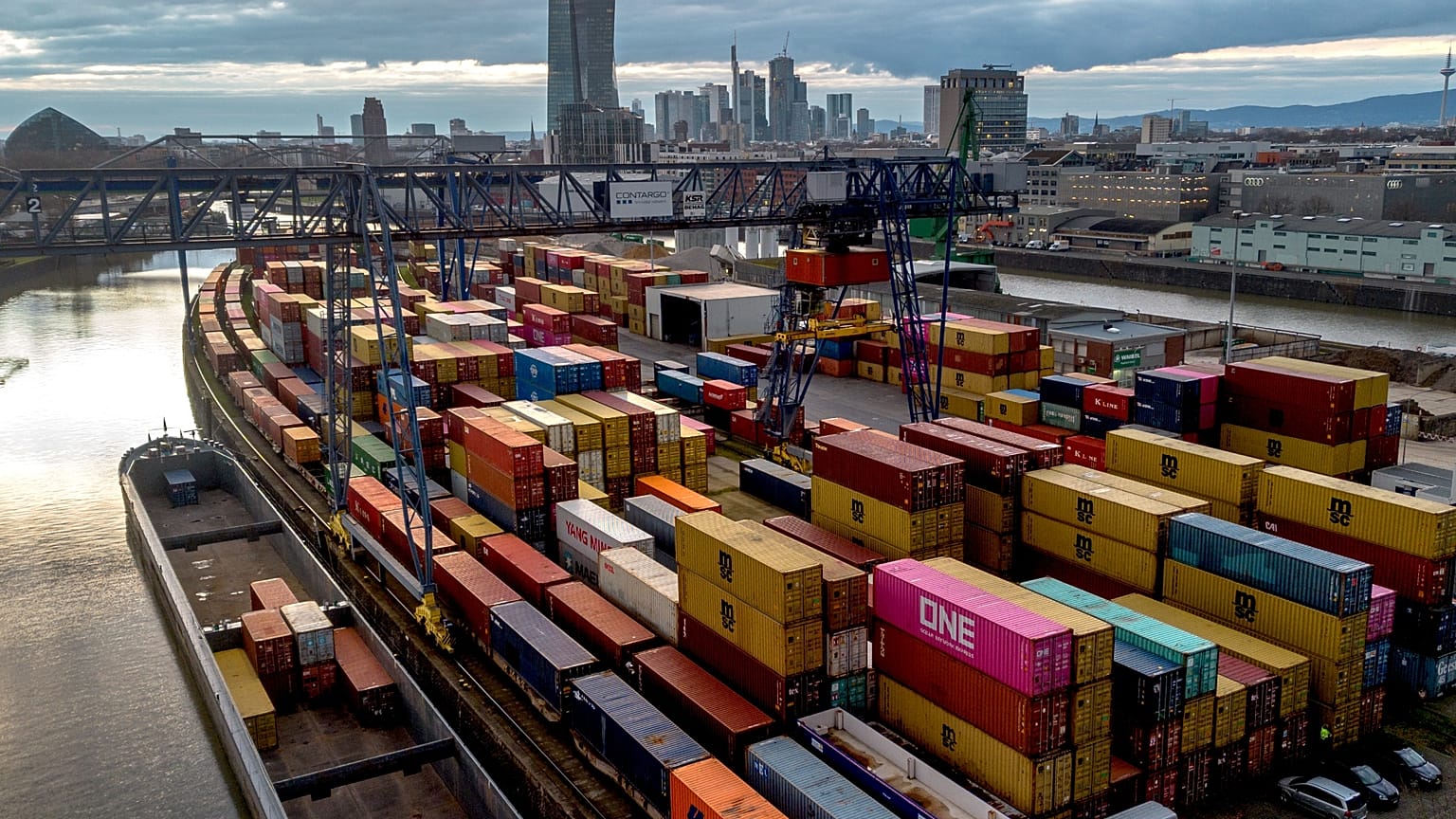The eurozone's trade surplus soared to €19.4bn in September 2025, driven by surging exports to the US following the latest trade deal.
The eurozone’s trade surplus in goods recorded a sharp increase in September 2025, as exports to the United States jumped following the implementation of a new transatlantic trade agreement that eased tensions after months of tariff-related disruption.
According to Eurostat data released on Friday, the euro area posted a trade surplus of €19.4 billion in September, up markedly from €1.9bn in August and well above the €12.9bn recorded in September 2024. The rebound was primarily fuelled by stronger US-bound shipments and a surge in the chemicals sector.
EU-US trade deal boosts exports
Exports from the euro area to the rest of the world rose to €256.6bn in September, marking a 7.7% increase year-on-year. Imports also climbed, reaching €237.1bn, up 5.3% from the same month a year earlier.
The resulting surplus highlights the positive trade momentum, particularly with the United States, as the effects of the new US-EU trade agreement deal began to materialise.
The deal — reached last summer between European Commission President Ursula von der Leyen and US President Donald Trump — established a single, all-inclusive 15% tariff across most sectors, including cars, semiconductors, pharmaceuticals and lumber.
EU exports to the US increased to €53.1bn in September, a 15.4% year-on-year rise, making the US the bloc’s fastest-growing export destination. Imports from the US also strengthened, climbing to €30.9bn, up 12.5% from the previous year.
Overall, the EU’s trade balance with the US improved to €22.2bn, compared with €18.5bn in September 2024.
While exports to the US grew strongly, EU trade with China continued to weaken.
Exports to China fell by 2.5% year-on-year in September to €16.7bn, reflecting subdued Chinese demand.
Exports to Türkiye slipped 1.5%, while exports to South Korea rose 6.6%, to Japan 3.5%, to India 7.7% and to Mexico 11.1%.
On the import side, shipments from Norway surged 13.8%, likely tied to energy and raw material flows.
Chemical products drive Europe's surplus
For the broader European Union, the trade balance also showed a substantial improvement.
The EU recorded a surplus of €16.3bn in September, reversing a €4.5bn deficit in August.
This shift was again largely driven by the chemicals sector, whose surplus rose to €26.9bn, up from €15.4bn the previous month.
Compared with September 2024, the EU’s overall trade balance improved by €6.8bn.
However, the surplus for machinery and vehicles narrowed from €16.4bn to €13.8bn.
Despite the strong September figures, year-to-date performance remains below 2024 levels, reflecting the drag from earlier US tariff policies.
From January to September 2025, the euro area recorded a surplus of €128.7bn, down from €134.3bn in the same period last year.
Similarly, the EU's year-to-date surplus stood at €104.3bn, compared with €113bn in the first nine months of 2024.
What's next?
Despite the boost to trade flows and investor sentiment, the EU-US trade agreement signed in August may soon face its first major test.
According to Bank of America economist Ruben Segura-Cayuela, the deal was from the outset “a bad and unstable one,” hampered by unresolved issues and a lack of clarity around key commitments. Four months later, much of that ambiguity remains.
Crucial elements — such as the EU's promised tariff cuts on industrial goods — have yet to be finalised or approved.
Contradictions also persist over the extent of regulatory alignment, particularly in sensitive sectors such as energy, defence and investment.
Next week, the Commission is expected to present a new implementation plan to Washington aimed at clarifying these commitments.
However, the move underscores the institutional challenges Brussels faces in coordinating trade actions across member states, and its limited authority in enforcing follow-through at the national level.
With political pressure building and the US administration watching closely, the upcoming meeting will serve as a key litmus test.
Any signs of delay or backtracking from the EU could prompt a sharp reaction from Washington — potentially reviving the very trade tensions the summer agreement sought to defuse.


















